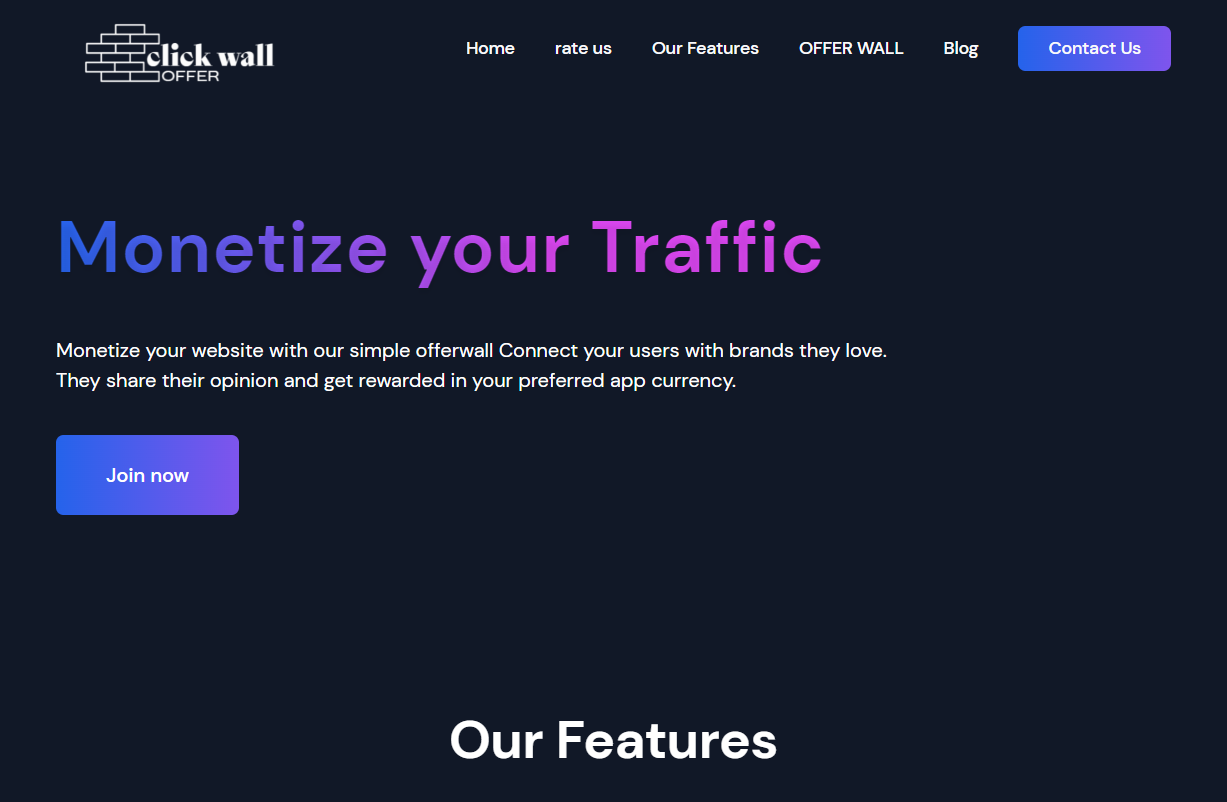
User Review
( votes)Key Performance Indicators, or KPIs, are quantifiable metrics designed to evaluate a business’s success and effectiveness in achieving its objectives. These specific, measurable indicators are tailored to reflect critical aspects of performance across various areas, including financial health, customer satisfaction, operational efficiency, and market reach. Whether tracking revenue growth, customer acquisition costs, or website conversion rates, each KPI serves as a measurable gauge to help small business owners navigate the complexities of their ventures. In essence, KPIs transform abstract business goals into tangible, trackable metrics, empowering small businesses to proactively shape their trajectory toward success.
Revenue Growth Rate
Revenue growth rate serves as a powerful Key Performance Indicator (KPI) that provides crucial insights into the overall health and trajectory of a business. Tracking this metric reveals valuable information about how effectively a business is expanding and generating income over a specific period. Here’s a breakdown of how monitoring revenue growth rates offers essential insights into business performance:
- Indicator of Business Health:
The revenue growth rate is a direct indicator of a business’s financial health. Positive growth signifies that the business is effectively attracting and retaining customers, selling products or services, and ultimately increasing its overall revenue.
- Performance Evaluation:
By comparing revenue growth rates across different periods, businesses can evaluate the effectiveness of their strategies and initiatives. Consistent or accelerating growth rates suggest successful execution, while declining rates may prompt a reevaluation of business tactics.
- Market Competitiveness:
Analyzing revenue growth in the context of industry benchmarks helps businesses understand their competitiveness. Outperforming industry averages indicate a strong market position, while lagging behind may highlight the need for adjustments in marketing or operational strategies.
- Customer Acceptance and Loyalty:
Increasing revenue typically correlates with customer acceptance and loyalty. Businesses experiencing growth are likely to meet customer needs, deliver value, foster loyalty, and contribute to sustained financial success.
- Investment and Expansion Opportunities:
A positive revenue growth rate attracts investors and opens doors for potential expansion opportunities. Investors often seek businesses with a proven track record of revenue growth, as it signals a sound and promising investment.
- Financial Planning and Decision-Making:
Businesses can use insights from the revenue growth rate to inform financial planning and decision-making. Whether allocating budgets, setting sales targets, or planning expansions, a clear understanding of revenue growth is fundamental for strategic decision-making.

Customer Acquisition Cost (CAC)
Customer Acquisition Cost (CAC) serves as a vital tool for small businesses aiming to refine and optimize their marketing strategies. Here’s how understanding CAC can be instrumental in enhancing overall marketing efficiency:
- Resource Allocation:
CAC provides a clear breakdown of the costs associated with acquiring a new customer. By comprehending these expenses, businesses can strategically allocate resources to the most effective marketing channels. This ensures that budgetary resources are directed towards channels that yield the best return on investment.
- Channel Effectiveness:
Small businesses often employ various marketing channels, such as social media, email campaigns, or paid advertising. Understanding CAC allows businesses to evaluate the effectiveness of each channel. This insight enables them to identify high-performing channels, optimize their strategies, and potentially reallocate funds from less effective channels to those driving better results.
- Targeted Audience Identification:
CAC analysis enables businesses to identify and focus on customer segments that result in lower acquisition costs and higher value. By refining targeting strategies based on CAC metrics, businesses can optimize their efforts toward attracting customers who are more likely to convert, ensuring a more efficient use of marketing resources.
- Budget Optimization:
Strategic budget allocation is crucial for small businesses with limited resources. CAC guides businesses in allocating budgets effectively, ensuring that marketing campaigns are not only impactful but also cost-efficient. This approach prevents overspending on customer acquisition and allows for a more sustainable and scalable marketing strategy.
- Iterative Improvement:
CAC is not a static metric; it requires continuous monitoring and adaptation. Small businesses can use CAC data to iteratively improve their marketing strategies. By regularly analyzing CAC and adjusting campaigns based on performance, businesses can stay agile, responding to market changes and evolving consumer behaviors.
Customer Lifetime Value (CLV)
Customer Lifetime Value (CLV) is a pivotal metric that holds immense importance for small businesses, especially when focusing on long-term sustainability. Here are key reasons why tracking CLV is crucial for businesses aiming for sustained success:
- Strategic Decision-Making:
CLV provides businesses with insights into the total value a customer is expected to generate over their entire relationship with the company. This knowledge enables strategic decision-making, allowing businesses to tailor their efforts toward acquiring and retaining high-value customers. Understanding CLV helps in setting realistic goals and designing effective strategies for long-term growth.
- Resource Allocation:
Efficient resource allocation is fundamental for small businesses with limited resources. By knowing the CLV, businesses can allocate their marketing and operational budgets more effectively. This ensures that investments are directed towards activities that yield the highest returns over the customer’s lifetime, contributing to sustained profitability.
- Customer Retention Strategies:
CLV emphasizes the importance of customer retention. Acquiring new customers is essential, but retaining existing ones is equally—if not more—important. Businesses with a clear understanding of CLV can develop targeted retention strategies, fostering customer loyalty and encouraging repeat business. Loyal customers contribute significantly to the long-term success and stability of a business.
- Enhanced Customer Relationships:
CLV encourages businesses to focus on building strong, lasting relationships with customers. Understanding the potential value of a customer over time incentivizes businesses to provide excellent customer service, personalized experiences, and consistent quality. These efforts not only enhance customer satisfaction but also contribute to increased CLV through repeat purchases and positive word-of-mouth marketing.
- Forecasting and Planning:
CLV acts as a forecasting tool for businesses. By projecting the future value of their customer base, businesses can make informed decisions about product development, inventory management, and overall business planning. This forward-looking approach ensures that businesses are prepared to meet the evolving needs of their customers and the market.
- Competitive Edge:
In a competitive landscape, businesses that prioritize customer lifetime value gain a strategic advantage. CLV-driven strategies allow businesses to focus on sustainable growth rather than short-term gains. This long-term perspective can set businesses apart, fostering a positive reputation and attracting customers who value a lasting relationship with a brand.

Inventory Turnover
Inventory turnover is a critical metric that holds the key to operational efficiency for small businesses. Here’s how monitoring inventory turnover enhances operational efficiency:
- Optimizing Stock Levels:
By tracking inventory turnover, businesses can determine how quickly their stock is sold over a specific period of time. This insight allows for the optimization of stock levels. Maintaining an inventory that aligns with customer demand prevents overstocking and stockouts, ensuring that products move efficiently without tying up excess capital in unsold goods.
- Working Capital Management:
Efficient inventory turnover directly contributes to effective working capital management. Businesses can free up capital that would otherwise be tied up in slow-moving or obsolete inventory. This released capital can be reinvested in more profitable areas of the business, such as marketing, innovation, or expanding product lines.
- Reducing Holding Costs:
Excessive inventory comes with associated holding costs, including warehousing, insurance, and potential losses due to product obsolescence. Monitoring inventory turnover helps identify slow-moving items or overstocked products, enabling businesses to take corrective action. This, in turn, reduces holding costs and improves overall cost-effectiveness.
- Minimizing Waste:
For businesses dealing with perishable or time-sensitive goods, maintaining a high inventory turnover rate is crucial to minimizing waste. Products that stay on shelves for extended periods risk becoming obsolete or reaching their expiration dates. By closely monitoring inventory turnover, businesses can implement strategies to minimize waste and ensure that products are sold before losing their value.
- Enhancing Cash Flow:
Swift inventory turnover contributes to a healthy cash flow. When products move efficiently, businesses can generate revenue faster and reinvest that revenue back into the business. This positive cash flow cycle is particularly vital for small businesses that may face challenges with limited access to capital.
- Meeting Customer Demand:
Timely inventory turnover ensures that businesses can meet customer demand promptly. For products with a high turnover rate, businesses are better equipped to restock quickly, prevent stockouts, and fulfill customer orders without delays. This responsiveness to customer needs enhances customer satisfaction and loyalty.
Adapting to Market Changes: Monitoring inventory turnover provides valuable insights into changing market trends and customer preferences. Businesses can adjust their inventory strategies based on real-time data, ensuring that they stay agile and responsive to market dynamics. This adaptability is crucial for remaining competitive in a dynamic business environment.

Website Traffic and Conversion Rates
For small businesses venturing into the digital landscape, the synergy between website traffic and conversion rates is pivotal for achieving online success. Here’s an exploration of their roles:
- Website Traffic as the Gateway:
Visibility and Reach: Website traffic represents the influx of visitors to an online platform, serving as the initial gateway to potential customers. Increased traffic expands the business’s visibility, reaching a broader audience and creating opportunities for engagement.
Brand Exposure: High website traffic contributes to brand exposure. As more individuals navigate the site, the brand gains recognition, fostering trust and familiarity among online consumers.
- Conversion Rates as the Catalyst:
Turning Visitors into Customers: While traffic is the starting point, conversion rates define success by transforming visitors into customers. A high conversion rate indicates that a significant portion of the website traffic is taking the desired actions—whether it’s making a purchase, signing up for newsletters, or engaging with content.
Maximizing Value: Conversion rates are about maximizing the value derived from website traffic. It’s not just about attracting visitors but ensuring that these visitors contribute to the business’s objectives, whether through sales or other valuable interactions.
- The Symbiotic Relationship:
Optimizing User Experience: A harmonious relationship between website traffic and conversion rates hinges on optimizing the user experience. A well-designed and user-friendly website not only attracts traffic but also enhances the likelihood of conversions by providing a seamless journey for visitors.
Understanding Audience Behavior: Monitoring website traffic and analyzing conversion rates offer insights into audience behavior. Businesses can understand what appeals to their audience, identify popular content, and optimize the website to align with user preferences.
- Strategies for Success:
Targeted Traffic Acquisition: Instead of solely focusing on increasing traffic volume, businesses should prioritize targeted traffic acquisition. Drawing in individuals genuinely interested in products or services increases the likelihood of conversions, making each visitor more valuable.
Conversion Rate Optimization (CRO): Implementing CRO strategies is essential for boosting conversion rates. This involves refining elements of the website, such as call-to-action buttons, checkout processes, and landing pages, to enhance the user experience and encourage desired actions.
Conclusion
Key Performance Indicators (KPIs) emerge as powerful allies, steering success and fostering growth. These quantifiable metrics act as navigational tools, providing invaluable insights into various facets of business operations. The significance of KPIs lies in their ability to quantify performance, measure success, and guide strategic decision-making. For small businesses operating with limited resources, KPIs act as beacons, illuminating the path toward operational efficiency, financial stability, and sustainable growth. From monitoring Revenue Growth Rate, Customer Acquisition Cost (CAC), and Customer Lifetime Value (CLV) to optimizing Inventory Turnover and understanding the symbiotic relationship between Website Traffic and Conversion Rates, each KPI transforms abstract business goals into tangible, trackable metrics. Empowered by this data-driven approach, small businesses can proactively shape their trajectory toward success in the competitive business landscape.







